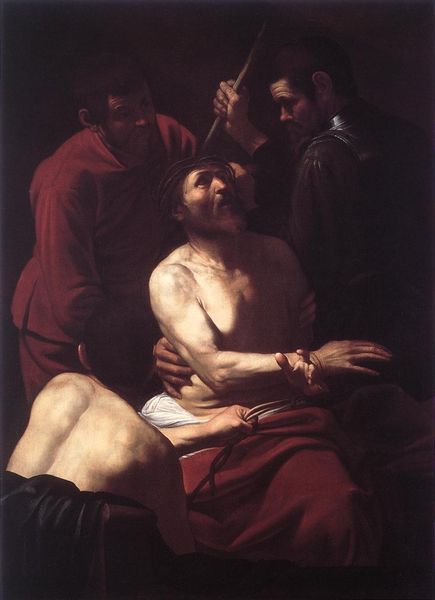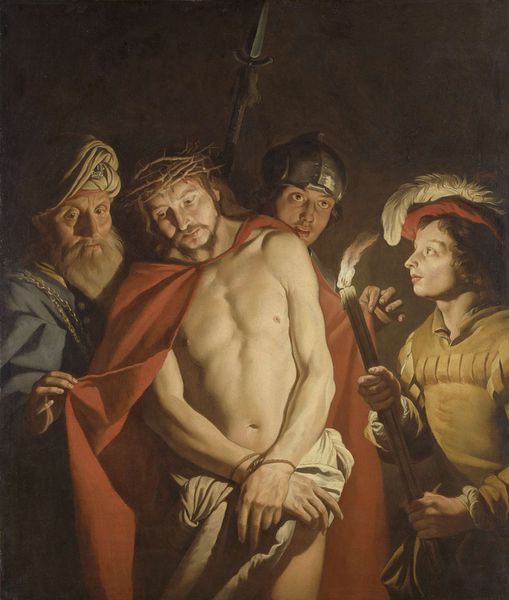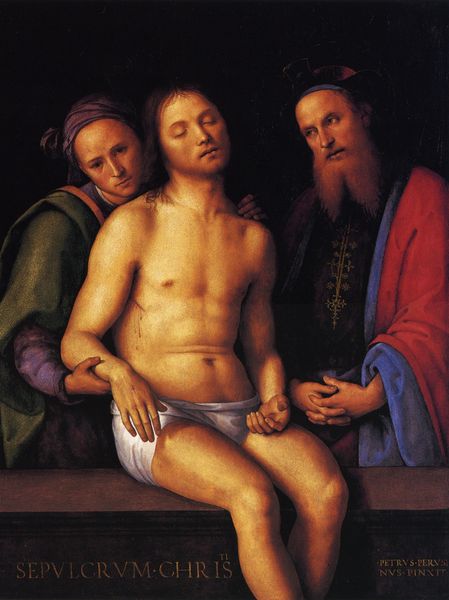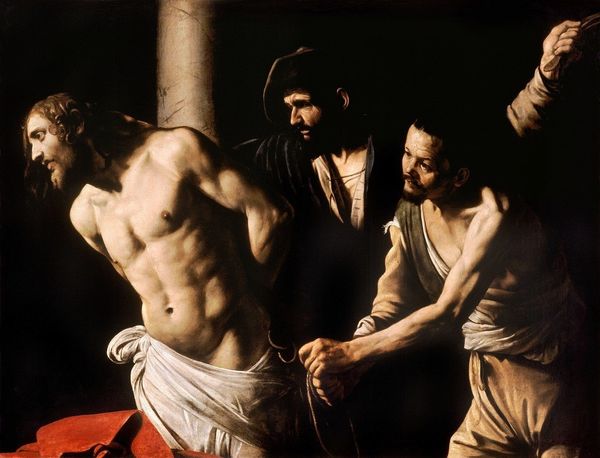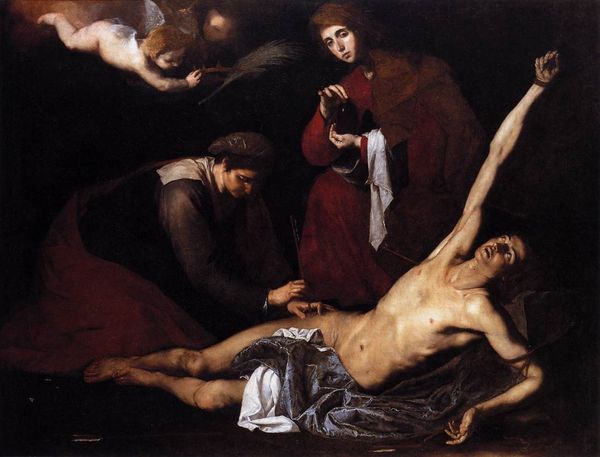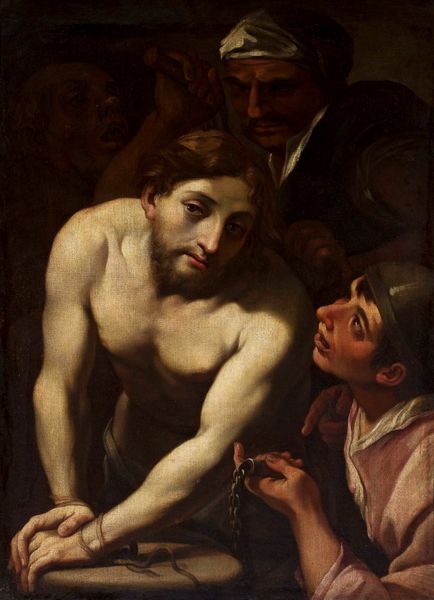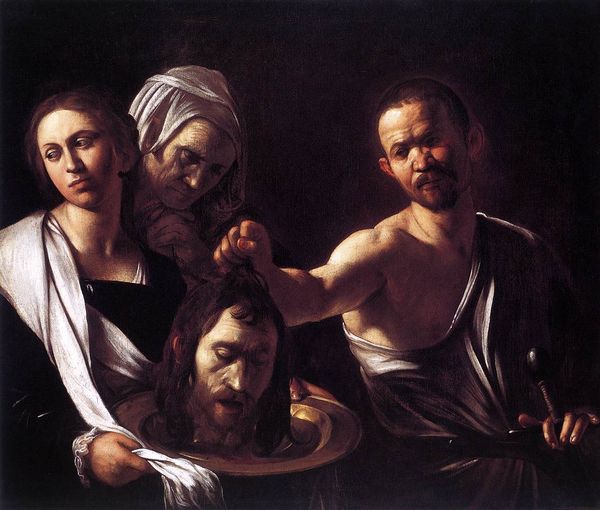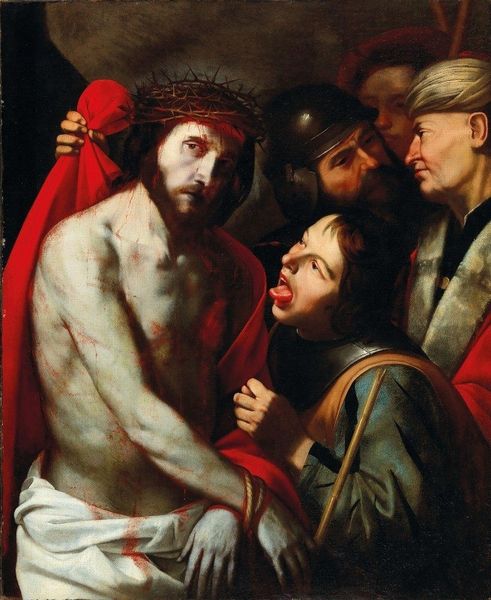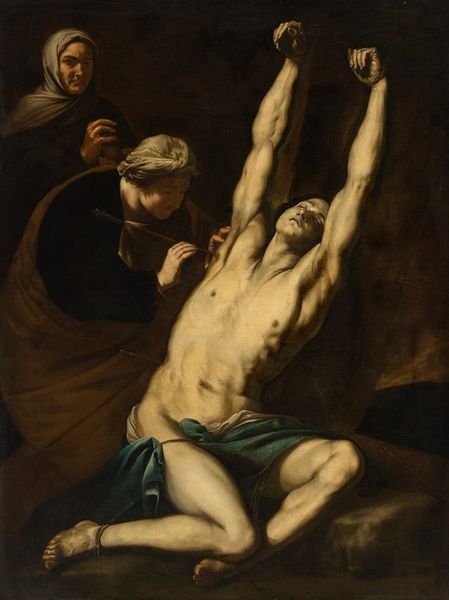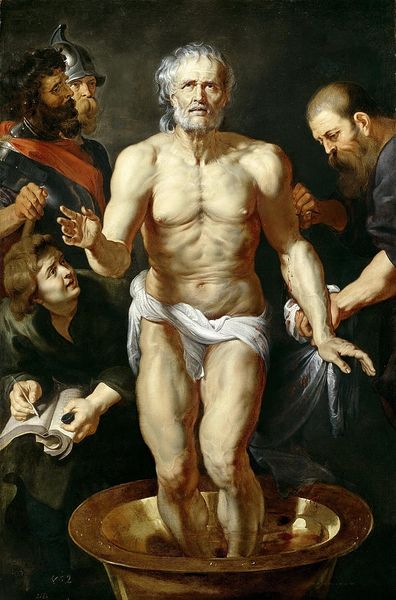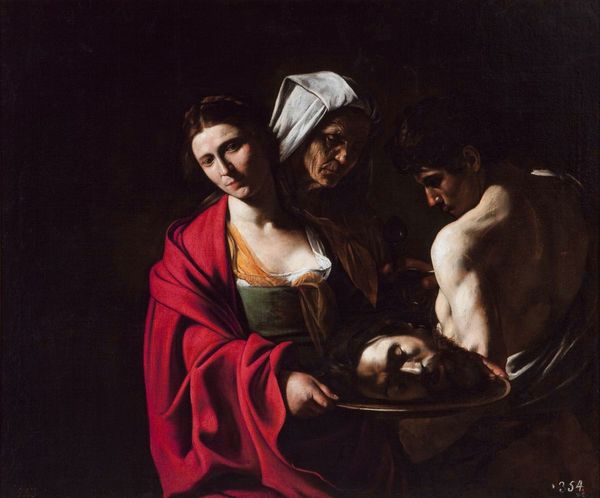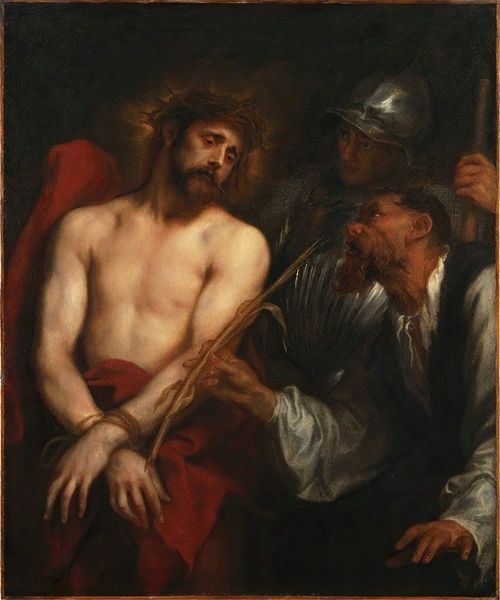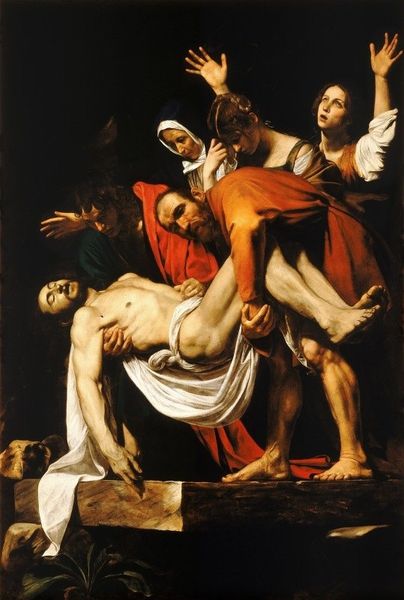
painting, oil-paint
#
baroque
#
painting
#
oil-paint
#
figuration
#
history-painting
#
realism
Copyright: Public Domain: Artvee
Curator: Standing before us is Caravaggio's “Ecce Homo,” created around 1605. The oil on canvas powerfully depicts the biblical scene of Christ presented to the masses before his crucifixion. Editor: My initial reaction is one of stark simplicity, despite the weighty subject matter. The canvas has this dramatic lighting and it seems so intimate, it emphasizes a really rough moment, capturing something incredibly human in this divinity. Curator: Absolutely. Look at how Caravaggio utilized readily available pigments, mixing them with oils to achieve these intense contrasts. It speaks volumes about the resources and skill at his disposal. Notice the rendering of flesh; that's a direct result of his handling of material. Editor: And it's fascinating how certain objects carry such immense symbolic power. The crown of thorns, meticulously rendered, instantly evokes centuries of religious narratives and suffering. Its texture even invites contemplation on its implied physical pain. Curator: That focus on texture reminds me that Caravaggio likely employed techniques common among artisans of his time: layering paints meticulously to build up volume. It wasn't just about painting; it was a form of building, like sculpture. Editor: Precisely. Think about how the single cloth held aloft behind Christ's head does a lot of symbolic work: It’s a nod to earlier presentations of Jesus with Veronica's Veil. That bit of fabric performs so much art historical heavy lifting to those 'in the know'! Curator: Considering his access to various fabrics in Rome, did Caravaggio intend to contrast these luxury cloths with Christ's rough condition, drawing attention to societal disparities through raw materials? I wonder… Editor: Good question, because that also touches on class difference... but back to symbolism. That stern bearded man on the right represents Roman authority... Pilate? Either way his eyes hold an almost calculating indifference, furthering a conversation about power. Curator: It is fascinating to observe the convergence of class, authority and representation of materials through this one incredible artist’s means. Editor: It leaves us contemplating not just the passion of Christ, but the weight of art history bearing down upon a single frame. Thank you Caravaggio!
Comments
No comments
Be the first to comment and join the conversation on the ultimate creative platform.
